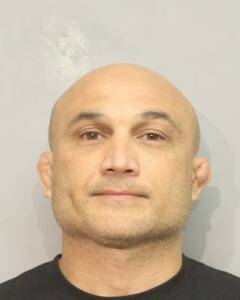USWNT heads to Olympics lacking goals scored: ‘If we went into Zambia perfect, I’d be worried’
After two friendlies in blazing heat and humid weather, the U.S. women’s national team is headed to France for the Paris Olympics. With a 1-0 win against Mexico and a dreary scoreless draw against Costa Rica, head coach Emma Hayes’ plan of attack is still unclear. The game against Costa Rica in particular showed what not to do with the U.S. registering 26 shots (12 on goal) and 80% possession. Costa Rica took just two shots and they were both in the first half.
“It’s a process, and I think when that frustration creeps in, it’s even harder to start putting goals away,” center back Naomi Girma said after the Costa Rica game. “So as a team, it’s staying positive and knowing that we’re getting in the right spaces. We’re taking a lot of good opportunities, we just need to execute and finish.”
ADVERTISING
But after the Costa Rica draw, Hayes said she didn’t want the team to look perfect.
“If we went into Zambia perfect, I’d be worried,” she said. “I feel the opposite. I think we’ve had, in the Korea game, the Mexico game, the Costa Rica game, four very different exercises. One, as I said earlier, breaking down a mid block. Two, breaking down an aggressive mid block. Three, breaking down a team that beat us in the Gold Cup with more man-for-man marking. Four, breaking down a low, low block.”
Hayes said that so many different types of games were great exposure for the team, and reiterated several times that playing against a low block was, for her, one of the most difficult things to do in soccer.
“If we keep creating chances in the right area, keep getting numbers in the box, keep getting as many touches as possible in that area, those goals will come. That, I’m sure of,” she said.
It’s just four friendlies’ worth of data under Hayes’ direct guidance. Still, there are a couple of things that look certain: her reliance on Lindsey Horan and Rose Lavelle in the midfield, her confidence in Sophia Smith and Mal Swanson (who wouldn’t have confidence in them right now, though), and Girma and Tierna Davidson as a center back pairing.
Jeff Rueter and Steph Yang discuss what we learned as the USWNT officially sets flight for the south of France…
The USWNT had issues scoring in both send-off matches. Against Costa Rica, it wasn’t just about generating quality chances and not quite finishing them. The U.S. looked sluggish — no surprise in the dragging heat, but not something unique to these games. Hayes explicitly said these games would be part of their acclimatization for playing the group stage in the south of France, where it’s also going to be oppressively hot and humid. It’s smart not to play pedal to the metal right before you leave but it’s also not good to have your last game before a tournament be this strange, somewhat sloppy affair where nearly every entry into the box looked a step off on timing.
Throughout 2024, the most common forward line has seen Mallory Swanson on the left wing, Trinity Rodman on the right, and Sophia Smith at striker. All three players are dangerous and multi-faceted attackers, able to weave up the field by reacting to each other’s movement. Rodman has shown the most willingness to play distributor rather than looking for a shot. That was vital in the team’s entertaining win over Colombia in March, when her ability to find space in transition before playing a squared pass into the box made all the difference.
It’s tricky to replicate that kind of open-field situation during a fixed phase of possession where a team isn’t on a counterattack. For a year running, this attacking group hasn’t looked as comfortable breaking down an established defense, particularly one with five or more players in the box to gum up passing lanes. They’re likely going to need to figure it out quick in order to advance far at the Olympics — although they’re out of time to get some positive examples under their belts beforehand.
This team also needs more zest in that midfield. Horan is supposedly the metronome that sets the rhythm but she sometimes backslides into a little bit of dullness, not quite on the beat. Sam Coffey has her moments underneath Horan, but is also not a reliable source of midfield spark.
Starting as the No. 10 against Costa Rica, Horan didn’t display the kind of unpredictability that comes from Roe Lavelle or Jaedyn Shaw, or even alternate Croix Bethune. That trio approaches the role as playmakers, but Horan’s instincts from playing as a striker early in her career leave her as more of an auxiliary shooter − which also makes things more complicated for Smith.
Based on playing minutes, Hayes seems to not quite trust Shaw to carry that load even though she’s seemed fine, drifting in and out of midfield play as the No. 10 in a 4-2-3-1 — especially at the W Gold Cup. Shaw is a player who can come central while also drifting to the wing, which suits the fluidity that the team wants to play with and was certainly enjoyable in the team’s last game against Mexico when Shaw and Bethune played off of each other, alternately occupying that central area.
Though we might not have seen them first hand in Hayes’ first four games, there are certain tenets of play that every coach has to install immediately to yield best results come crunch time. Among those is how a coach wants their goalkeeper to play in possession — and we’ve already spotted a trend from Alyssa Naeher’s starts.
While Naeher’s big-game shot-stopping wins headlines and she backs herself to make a sweeping defensive action beyond the box, she hasn’t been as successful with meaningful distribution. Often, her coaches for club and country alike have responded to that relative shortcoming by asking her to keep it simple. Most often, that includes kicking it well beyond the defensive third, hoping a midfielder or forward can win a header to retain possession.
Against Mexico and Costa Rica, Naeher instead primarily looked to her center backs. Whether on restarts or during the run of play, she more frequently dished to Girma or Davidson, who would then distribute to either their nearest full back or look to central midfield for the next step.
This makes sense considering Naeher’s skillset, and does get the ball to more confident passers efficiently. The trade-off of distributing to center backs rather than full backs is that getting the ball to wide areas takes an additional pass, and with it a few precious seconds.
Getting from the back to the final third requires exploiting territory left vacant by an opponent, and that means working up the flank where there are usually fewer defenders around.
The approach also tends to telegraph a team’s intentions, which gives defenders additional time to shift and prepare. We saw as much for most of the friendlies against Mexico and Costa Rica, as both regional rivals were established in their defensive shape by the time the United States got into the final third. An alternative could be for each center back to mix in more crosses to the opposite flank, but those are higher-risk passes that could lead to turnovers in dangerous areas.
It’s all a work in progress at this point, but it’s something to keep an eye on in France.
We have some strong indicators about how Hayes wants to line up her starters based off of these two games, but even at the Olympics, Hayes’ tenure is so new it feels like there’s room for someone to elbow their way in on pure performance. And with the updated rules on alternates, in which players who get replaced by alternates due to temporary injury are allowed to return to the roster, Hayes’ comment in New York that “It’s a 22-player roster” is not an exaggeration.
Let’s take a look at Hayes’ possible starting line-up.
And for the purposes of this depth chart, we’re treating it like a true 22-player roster and listing each position from most likely to play to least. Players who are listed among the alternates will have their names in parenthesis.
Goalkeeper: Alyssa Naeher, Casey Murphy, (Jane Campbell)
Left back: Jenna Nighswonger, Crystal Dunn, Casey Krueger
Center back: Naomi Girma, Tierna Davidson, Emily Sonnett, Casey Krueger, (Emily Sams)
Right back: Emily Fox, Casey Krueger, Crystal Dunn, Emily Sonnett
Defensive Midfield (6): Sam Coffey, Korbin Albert, Emily Sonnett, (Hal Hershfelt)
Central Midfield (8): Lindsey Horan, Korbin Albert, Rose Lavelle
Attacking Midfield (10): Rose Lavelle, Lindsey Horan, Jaedyn Shaw, (Croix Bethune)
Left Wing: Mal Swanson, Lynn Williams, Jaedyn Shaw, (Croix Bethune)
Right Wing: Trinity Rodman, Crystal Dunn, Lynn Williams, (Croix Bethune)
Striker: Sophia Smith, Lynn Williams, Jaedyn Shaw
© 2024 The New York Times Company





